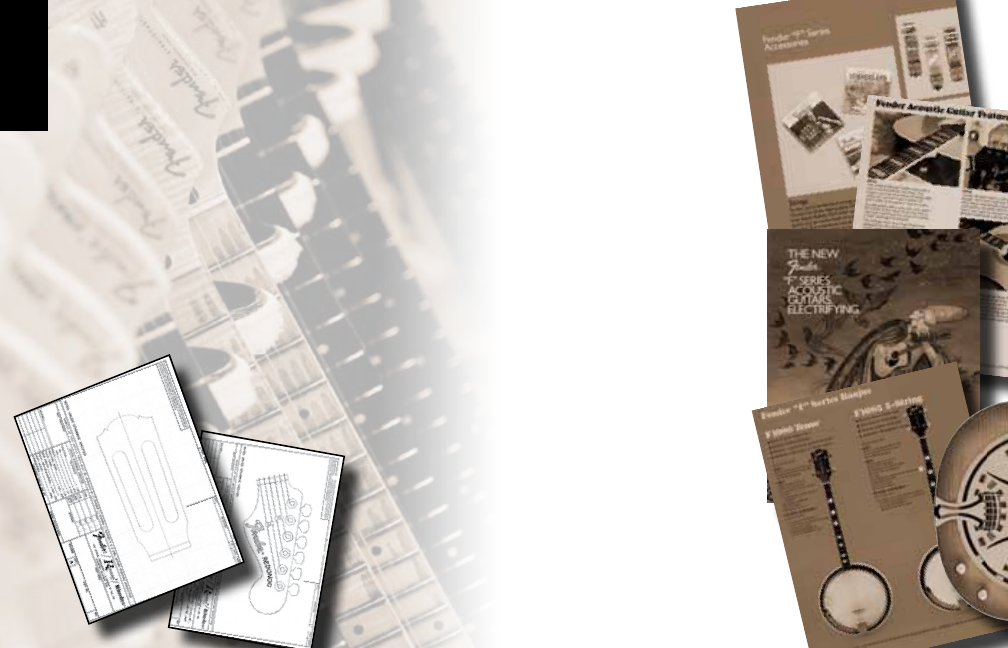
18
Fender’s rich acoustic guitar history dates all the way back to the early 1960s, when the company injected
a much-needed and thoroughly modern dose of youthfully exuberant Southern California sun-and-fun
culture into the somewhat stodgy old world of acoustic guitar design.
After the phenomenal success of Fender electric guitars, basses and ampliers, beginning in the late 1940s
and throughout the rocking and rolling ’50s, it seemed only natural that the growing Fender company would
turn its attention to the acoustic guitar world. Folk music was booming in the late 1950s and early 1960s,
and acoustic guitars remained an integral part of rock ‘n’ roll, country and pop records, so Fender’s eventual
involvement with the instrument type seemed a foregone conclusion.
At that time, a Fender acoustic guitar was not one for which you dressed formally or that you displayed as
a valuable relic. It wasn’t for the hushed classical concert stage. A Fender acoustic guitar was one that you
threw in the backseat and headed for the beach to join the gang. They were for the coffee house and the
campre. Fender acoustics were good-sounding, cool-looking instruments that were
a blast to play, as seen in the classic Fender advertisements of the ’60s era. Fender
acoustic guitars were fun.
And back in the day, some pretty heavy hitters used them, from
rock strummers to country pickers—artists such as Johnny
Cash, George Jones, Buck Owens and even the king of rock
‘n’ roll himself, Elvis Presley.
Fender began advertising its acoustic guitar line in 1963 at
the National Association of Music Merchants (NAMM) trade
show. They were attractive at-top instruments with unusual
features such as bolt-on necks (like Fender electric guitars),
The History of Fender
®
Acoustic Guitars …
5
History


















